Little Boots Interview
With a hugely successful debut album and collaborations with synth icons under her belt, Little Boots has become the ultimate DIY musician, both in and out of the studio. We sat down for an in-depth chat with her about her career and music making process… The perception that men are the only ones nerding away […]

With a hugely successful debut album and collaborations with synth icons under her belt, Little Boots has become the ultimate DIY musician, both in and out of the studio. We sat down for an in-depth chat with her about her career and music making process…
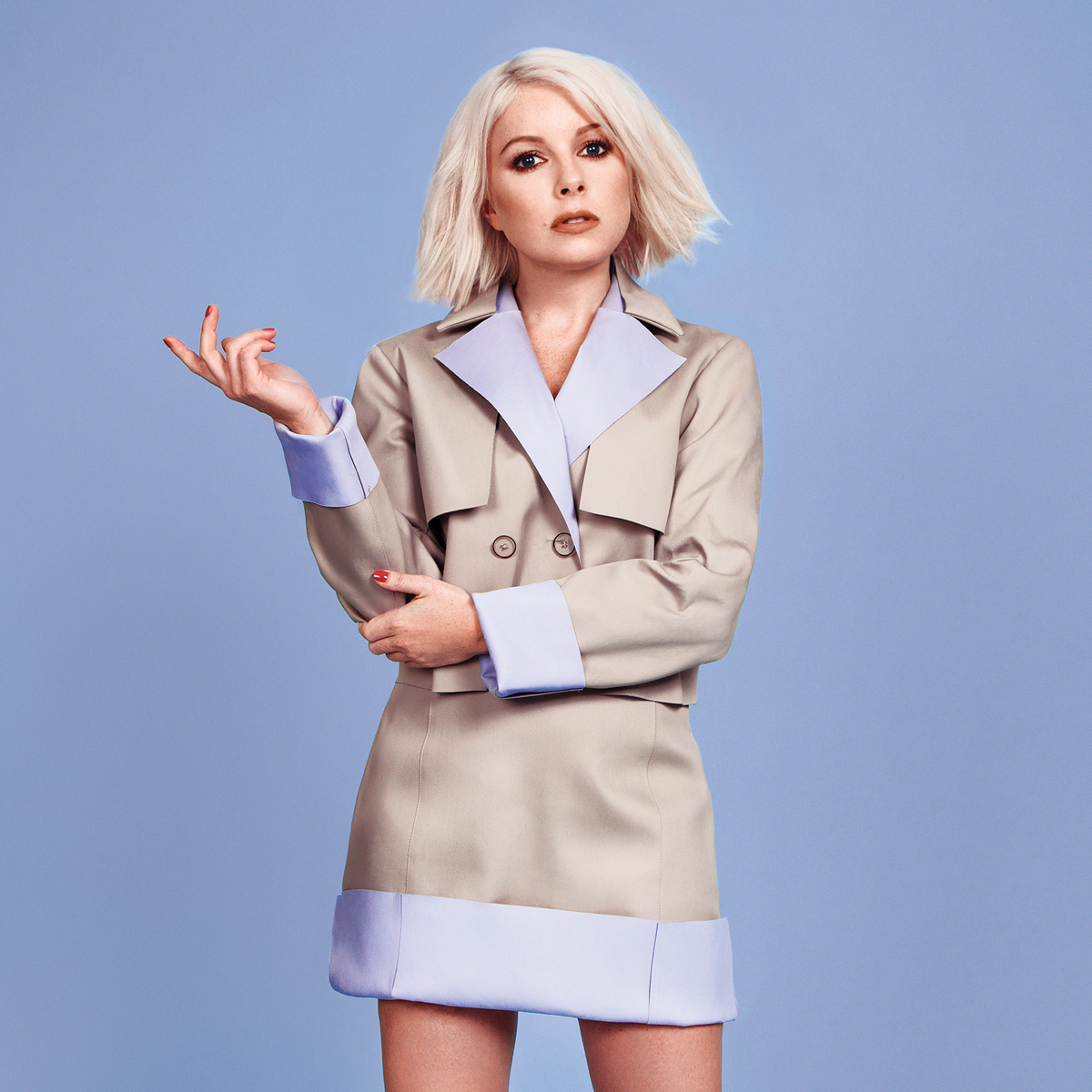
The perception that men are the only ones nerding away in the studio is thankfully becoming a thing of the past, and Victoria Hesketh, better known as Little Boots, is the perfect illustration of why. The Lancashire-born synth-pop guru is a self-made musician and trained originally as a classical singer.
She tried to climb the ladder the traditional way, and then via the TV talent show route until an off-putting experience on the now-defunct Pop Idol show enlightened her. Having formed the all-girl group Dead Disco in 2005, Hesketh realised that conforming to label expectations was yet another dead end.
With that, Little Boots was born. By networking on social media, Hesketh built a loyal following prior to the release of her acclaimed debut album, Hands.
Little Boots’ cross-generational appeal was later exemplified through collaborations with synth pioneers Gary Numan and Phil Oakey. However, with her third album, Working Girl, Hesketh has shown a willingness to shift between electronic pop boundaries, and it’s in the studio where we find the songstress at her most comfortable, speaking enthusiastically about the tools of her trade.
MusicTech: How has your musical background or training influenced the artist you have become?
Little Boots: I was classically trained at school, then did a bit of a crash course in jazz piano and singing, which has been a huge help to my songwriting. There are so many rules that you can’t break unless you learn them first! That being said, sometimes it’s the simplest ideas that are the best, and it’s important not to over-complicate or theorise stuff; I just try and trust my ears.
MT: You had a bad experience when you entered Pop Idol. What happened, and how did that influence your career for better or worse?
LB: It was so long ago I barely think about it, to be honest. It wasn’t that bad; I just got through a few rounds then didn’t make the show. But I was so young and it was obviously for the best.
I play and write my own music, so those kinds of competitions were completely the wrong place for me in hindsight. I just didn’t really know how else to get started in the music industry; as a teenager, it seemed like the only way.
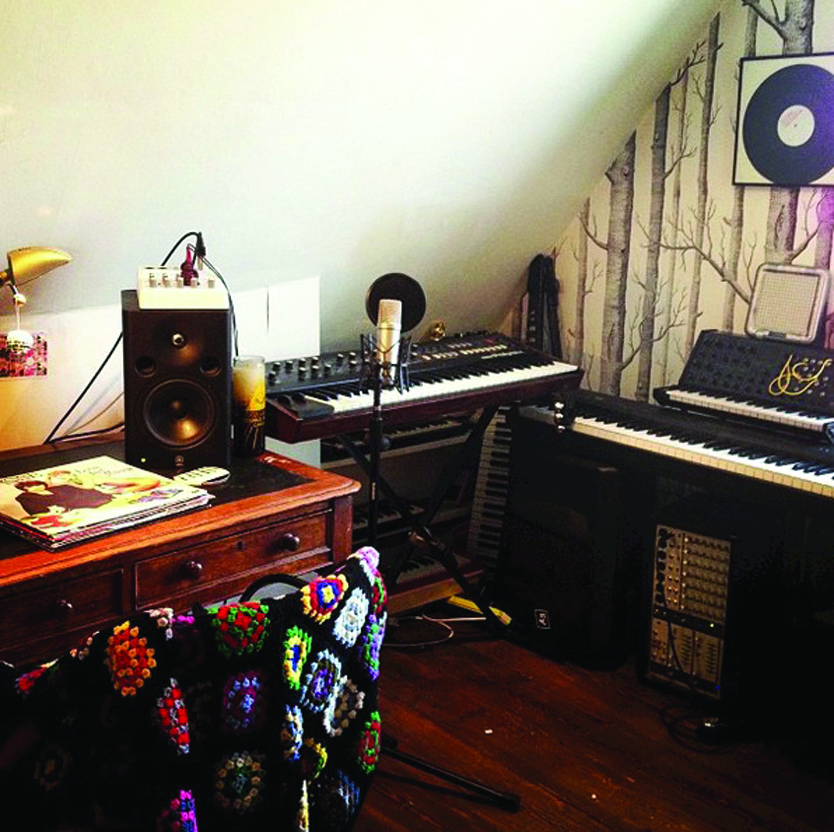
Little Boots home studio has a fairly simple setup. She uses it mainly for songwriting
MT: Where did your desire to use technology to make music initially stem from?
LB: At college. I desperately wanted to be in a band, all the cool kids were, but I only played piano, which didn’t seem that rock and roll. So I sold my harp, which I also played at the time, for a synth – a Korg MS2000.
I didn’t have a clue what it was capable of, but all the bands were into prog rock acts, like Yes, so I started to realise that synths could actually be pretty cool.
I just kept experimenting, trial and error, with all the buttons and knobs, until I started to figure it out. When I joined Dead Disco, I got a MicroKorg, because Brandon Flowers of The Killers played one at the time and we were very much into the indie scene. He was a big inspiration for me, as he showed you could be a brilliant frontman and still play the synth at the same time.
MT: Do any modern artists influence you?
LB: Lots of modern artists influence me. I’m constantly searching for new music for my DJ sets, where I play lots of new artists and remixes, mixed with some disco edits and old-school house.
There’s some great new pop acts around. I’m really inspired by artists like Lorde, who seems so wise beyond her years, and doing things entirely her own way. I also love Grimes; she’s created an amazing artist world around her music and won’t compromise.
And, obviously, Robyn is a huge inspiration to me, as are artists like Goldfrapp and Roisin Murphy, Maja Jane Coles, Annie Mac, Empress Of, Holly Herndon, Låpsley, Zhala, Robyn, and Miss Kittin. I’m sure there are many more. There’s also some great groups, like female:pressure, shedding light on female producers and electronic artists.

A positive verdict during the mixing sessions for new album Working Girl
MT: What gear did you initially obtain when compiling your first album, Hands?
LB: I work with a lot of different producers, so there’s always new or new old gear in their studios. I was lucky enough to work with some really talented people, like Greg Kurstin, who just had the most incredible collection of gear, although I remember mostly falling in love with his Roland SH-101. Pascal Gabriel had some amazing synths, too.
He introduced me to the Tenori-on, which I became known for playing, although I rarely used it in the studio. I always remember vocalling Stuck On Repeat with Joe Goddard at his home studio. He pretty much just had Cubase and a modular synth. I think you can often get the best stuff by limiting yourself and giving yourself boundaries – less is more.
MT: How has your studio evolved between Hands, Nocturnes and your latest album, Working Girl?
LB: My home studio is very basic. It’s mainly for songwriting, so I just have an electric piano and a couple of key synths, my Korg Polysix, Korg MS-20, Moog Phatty, a few vocal effects units and the Tenori-on.
I just got an Ableton Push, which I’m playing around with. There’s lots of similarities between that and the Tenori-on in how they both use a matrix and sequencer, but the Tenori-on is a lot more visual and random. Some of its patterns and sequences are led by visual effects, whereas I’d say the Push is more functional.
MT: Any other nice toys?
LB: I have a bunch of keyboards and gadgets that are closer to toys, various old Casio sampling keyboards and stylophones and an old mini organ. I always prefer things that are small and tactile, and don’t really like soft synths or getting too deep into programming. I’m more an ideas person, and usually need someone else to help me do the finessing.
I was very lucky with Nocturnes because I got to work in Tim Goldsworthy’s studio on the entire production. He’s a genius. His studio is like a mad laboratory, with patch cables everywhere. Often, I could only watch in wonder and go and make the tea.
MT: How does Working Girl evolve your sound, and how did you approach the album from a conceptual viewpoint?
LB: This record was written and produced with lots of different people, but I think because I had such a solid vision and focus for the album from early on, it always hung together.
I tried to find lots of upcoming or unexpected producers to work with to change up the sound and make it more current, while still trying to push the boundaries for a pop song; working with artists like Com Truise and Grades.
The conceptual theme is very much reflective of my own journey, from being a major label artist to starting my own label and regaining total creative control, but it’s also a wider kind of fantasy that I think everyone can relate to; ideas around success and ambition, control and connectivity in the digital age, and the pressures it brings.
But it’s also fun and quite knowing; the album doesn’t take itself too seriously, and I wanted to really express that with the aesthetic and the visual assets around the record.

Victoria enjoys working within limitations – a laptop and a good DAW. What more do you need?
MT: How long did it take you to write and record the album, and how did you structure that process?
LB: I probably wrote all the songs over a year, but the real job is bringing it all together, deciding which songs will make the cut and how to finesse them. It’s almost a curation job, and now I have no official A&R person that can be quite challenging.
A lot of the producers I found for myself and approached after hearing their work, or they were recommended by friends. I think that usually leads to better results than one record label boss ringing a big producer’s manager and offering a big cheque to do a session with a new artist.
This way, it’s much more organic, and you already have a mutual respect for each other before you even start the writing process.
MT: Do you work from home or go to a studio, and what type of environment do you like to work in?
LB: It’s always changing. I write all over the world and at home, on planes and buses, in the middle of the night or driving around singing into my phone or scribbling in a notebook, sometimes by myself, sometimes with three or four people.
The one thing I’ve learned about songwriting is that there are no rules and no magic formula or secret to discover. It’s always different and you never know where that magic will come from, you just have to have the confidence to try.
MT: Do you have a preference for either software or hardware? How does that inform your sound?
LB: I use Logic for my own writing and vocal recording and editing – I find it the most efficient. I’ve been working with it in one way or another since using it on my parents’ PC when I was a teenager.
For live shows and DJ mixes, I use Ableton, and now I have Ableton’s Push, I’m experimenting with it for writing as well because it’s so fast and quick to get ideas down with. I’m not that keen on soft synths, although the Native Instruments stuff is pretty good.
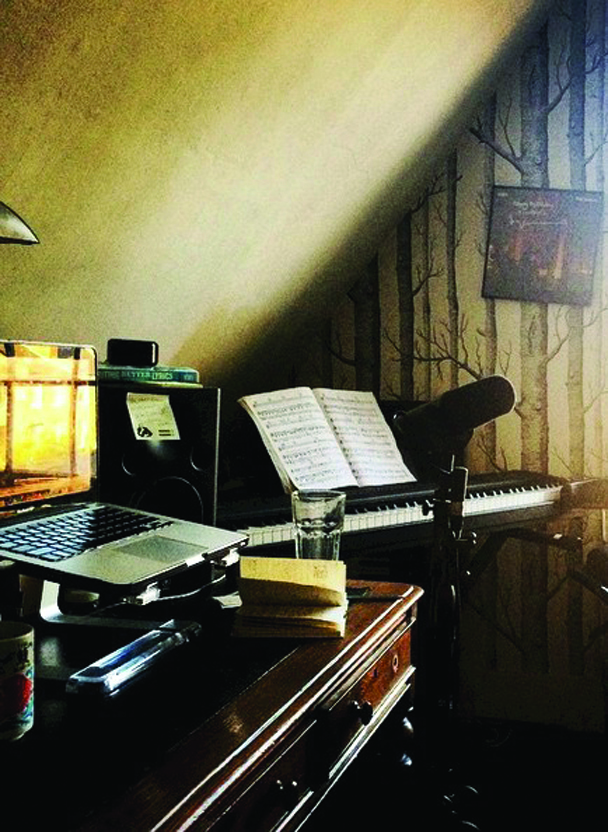
An electric piano, a couple of Korg’s , a Moog and a Tenori-on are at the heart of Victoria’s studio
MT: You have quite a bit of studio hardware too, right?
LB: For hardware, I’ve always been a Korg girl, and this has grown into a great relationship with them. I use their synths all the time, from the tiny portable controllers to the new analogue remodels to the Kaoscillator.
The Moog Sub Phatty, Dave Smith Prophet and Tempest synths have been invaluable to us in the live show and the studio – they just have great sounds and are reliable in a live environment. For writing on the go, I love my Apogee Duet. I can travel with it and plug it in anywhere and be ready to write.
It has a very straightforward soundcard and a couple of inputs and outputs that make it very easy to plug and play, or record on the road or at home, so it’s very immediate. Back in the studio, I like Sennheiser mics and use them both live and in the studio, but my go-to vocal mic is the Shure SM7B.
MT: Are you always on the look-out for new hardware? If so, what is catching your eye?
LB: I’m excited by the new Korg Odyssey. The new Moog Sub 37 looks good, too. I haven’t used them yet, so I’m not entirely sure, but The Odyssey is a new version of a classic synth, and I’m hoping the Sub 37 will expand on what the Sub Phatty does, which I already have but might be even better.
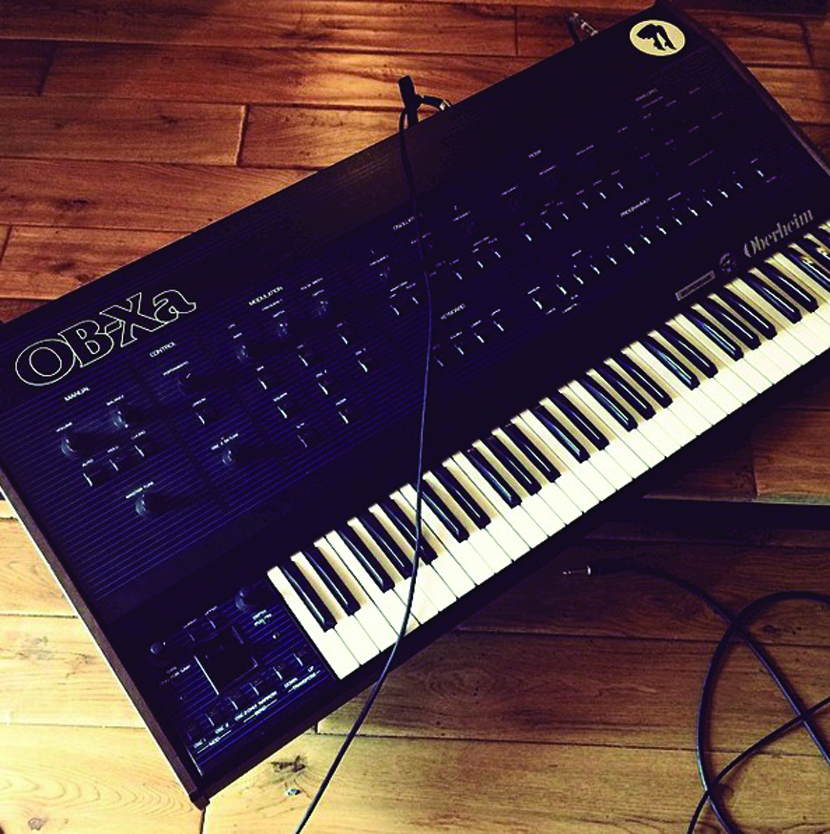
Little Boots is a fan of working with analogue synths, such as the Oberheim OB-Xa
MT: What’s next on your shopping list?
LB: Lipstick and a really high pair of heels; you never know what’s around the corner. A screwdriver often comes in handy, too. Other than shoes, I’m still hunting for a blue Roland SH-101 with mod grip to replace the one I had that got stolen a few years ago.
Also, I recently just saw that Casio did a sampling keyboard in the 80s in pastel colours – just for girls, and they’re really rare. That has to be at the very top of my list!!
MT: When it comes to sourcing synth sounds, are you a preset user or a programmer?
LB: I often like to roll through presets for speed, then modify them until they sound right. They’re a good starting point, but you really just have to trust your ears.
It’s no good getting lost for hours perfecting a sound then realising you don’t actually have a song to use it in. Song first, nerding after tends to be my rule.
MT: Do you mix in the box or on a desk?
LB: I don’t personally mix my songs, but I believe in using a desk. I’m not a very patient person and I’ve never really had the ears for mixing. I need to take some distance from the songs, otherwise I can’t get any objectivity on them.
If I go too deep into a mix with someone I just can’t hear if I’ve made it better or worse, so I’m much better coming back after a bit of breathing time and giving detailed notes to someone who mixes all the time.
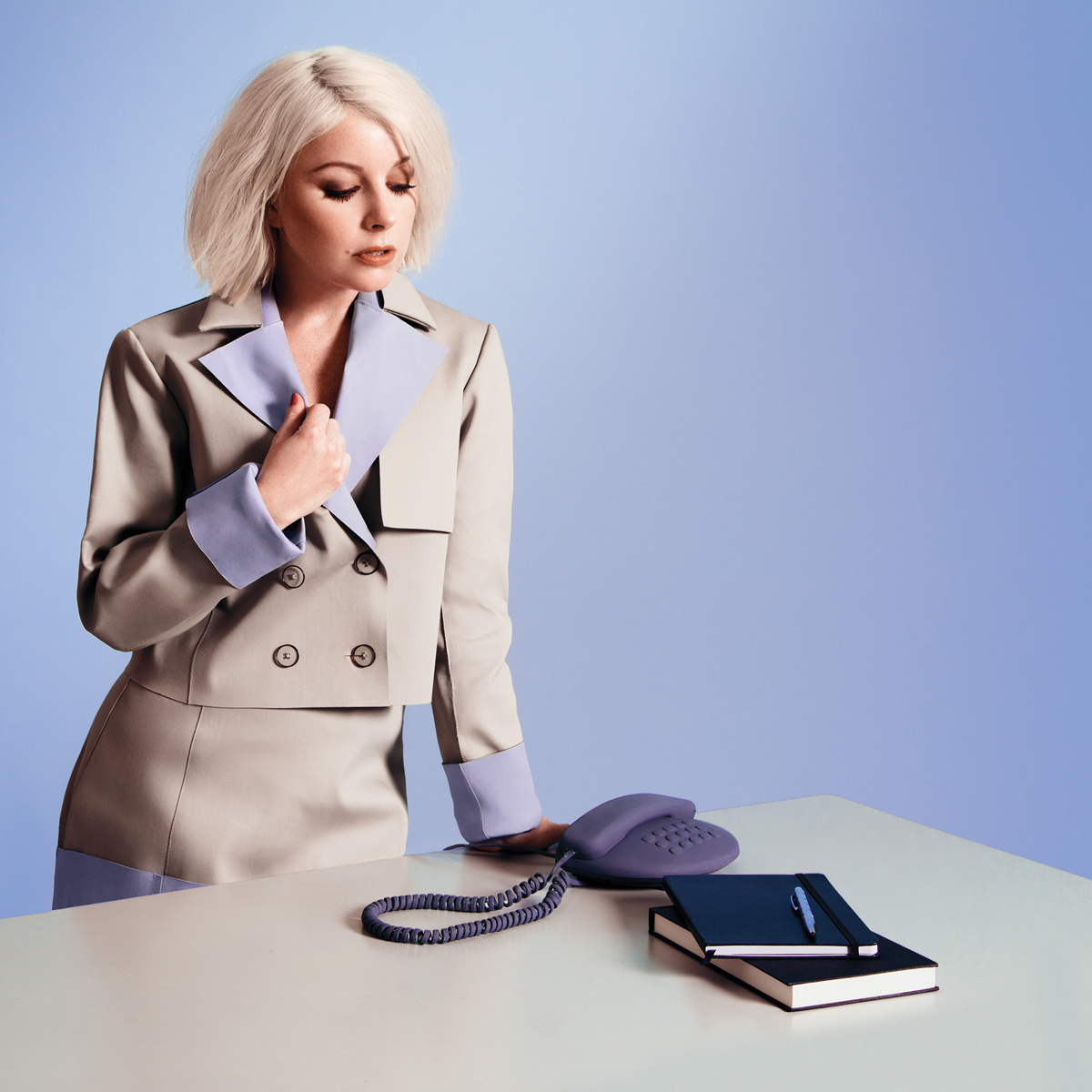
MT: Does new technology excite you from a creative viewpoint, or is it more about using whatever tools you have at your disposal?
LB: I usually use whatever’s around me, but I do get excited when new gear comes out that feels relevant to me. I’m always looking for electronic instruments or controllers, that not only sound great but are visual and can be utilised in a live situation. On stage, I’m really fascinated by trying to express electronic sounds visually as well as sonically.
I use both the Tenori-on and Push, synths like the Korg MS20, which looks great with all its patch cables, and Akai samplers, so you can see me pressing, hitting and triggering. I also use visuals from videos and clips. I cut them up and manipulate them using Resolume Avenue VJ software, triggered via Ableton. Of course, we also use props, outfits and dance moves!
MT: How much do you try to improvise within a live setting?
LB: I have a great white noise patch I can plug into my MS-20 at any time and make a racket. We also have quite a few bits of analogue hardware, so although programming the patches every time is quite unpredictable, I think it makes it sound more fun and real.
I’d rather make mistakes and have it sound live than all perfect off a backing track, or several Yamaha Motifs like a lot of pop shows do – it ends up being more like a glorified karaoke session.
I also have the TC Helicon VoiceLive Touch, which is lots of fun because I can live-effect my vocals and make loops and stutters. I have to be careful, though, because when I start messing around with gear I often nearly forget to come back in and sing at the right point!

It all started for Little Boots with a modular synth and a copy of Cubase
MT: Do you have an interest in modular equipment?
LB: I do, although I don’t have my own. It seems like a bit of a black hole I may never come back from! My synth player is building one that sounds brilliant. We are using it in the live show and I’m really excited about how it’s going to affect the sound for our upcoming shows.
MT: Can you tell me about your DJ set-up and the choice of music you play out?
LB: I’ve recently joined the 21st century and started using USB keys. Up until now, I was using a pretty unpredictable collection of semi-scratched vodka-stained CDs, so hopefully it’s an improvement. I keep it pretty simple.
I won’t use laptops because people can be very judgemental that you aren’t doing anything, especially if you’re a girl, so I like to mix live. I play a lot of disco edits and old-school house, mixed with new DJs and producer tracks and remixes of pop songs. I try keeping it fun and don’t take it too seriously; like a party I’m going to where I get to pick the music.

Victoria’s Korg MS-20 is a vital ingredient in her home studio setup
MT: How involved are you with the running of On Repeat Records, and are you looking for new artists?
LB: I’m completely involved at every level. We are a very small team, so we all have to wear several hats! We’ve had to learn very quickly, but it’s extremely rewarding, even though the industry is so challenging at the moment.
Working Girl is our seventh release and we’re constantly looking for new artists, so we’re hoping to expand on that in the future. Because we are so involved, we have to really love a project to take it on, as it’s a lot of work and time – especially when trying to release and promote my own material.
MT: What challenges have you faced in an industry that’s continually transforming?
LB: It’s extremely difficult to make money off album sales, which is tough being a small new label, but ways are slowly opening up so that artists can make things work, mainly more live shows and brand partnerships.
It’s a tough industry and you have to learn fast and work hard, but eventually you realise no one really knows what they’re doing as much as they make out and there’s a big part of it that’s down to chance; so you just have to have faith in your artists and music and hope that the rest will work itself out.
MT: Now that you’ve been running the label a while is it as empowering as you imagined it to be?
LB: Absolutely, although it’s definitely more work than I imagined. Being across everything, from the conception of the songs through to producing videos and handling the marketing and distribution of the physical product is a real 360-degree experience.
It takes some of the romance out of it, but now I wouldn’t have it any other way. I love being in control of what I’m creating and trying to help other artists to do the same.
MT: There are many women emerging in electronic music who no longer shy away from ‘nerding-out’ in the studio. Why do you think that is?
LB: I don’t think there are nearly enough women. If you look at the statistics, the ratio of female producers and DJs is horrendously low – it’s been a boys’ club for a very long time.
I think the problem has been stereotypes, and hopefully these are gradually being worn down. I don’t think women have ever really shied away from nerding out, but maybe they just haven’t been covered or given the same attention or press that their male counterparts would, the focus being on female musicians who are singers and artists and performers.
I think it’s incredibly important that women in music technology are given more of a stage so that there are examples for girls to look up to. Over time, this is slowly changing, more and more girls are enrolling in music tech courses at A-level, and hopefully this will continue and help to make this part of the industry much more balanced.
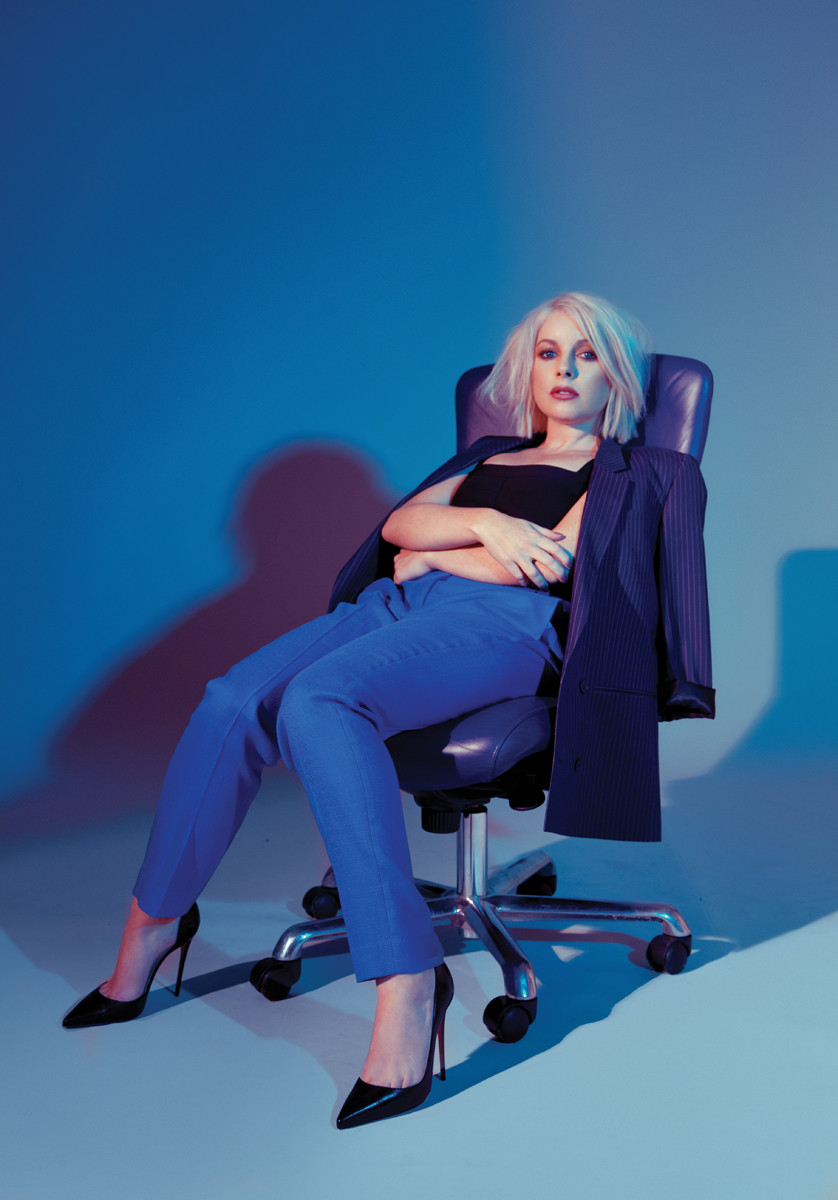
MT: Do you feel a responsibility to project a certain type of image, for example, what do you think about female artists that perpetually use sexuality to sell a product?
LB: I think there’s lots of different kinds of female artists and lots of different ways to sell products, musical or otherwise, and I don’t judge anyone else’s choices.
I just know now how I want to be perceived and represented and how I feel comfortable promoting my music. There are certain stereotypes that are presented to us again and again, whether they are the over-sexualised female pop artist or the nerdy male genius behind the scenes doing all the complicated button pressing and knob twiddling, but I’d like to think this is slowly changing.
Feminism has become very fashionable in the last couple of years and I hope that this will just become the norm rather than a trend, and more and more examples of female producers and DJs will come through and be given space.
MT: As a female artist, do you feel that obstacles are still put in your way?
LB: This is still a male-dominated industry and it’s not going to change overnight, but I think it’s a very exciting time for female artists and musicians, and there are lots of examples of women creating things in interesting ways that can’t be reduced or simplified, so it’s very inspiring.
I no longer feel pressured to look or act a certain way; I do things on my own terms and if I make good music I want that to be the case regardless of my gender.